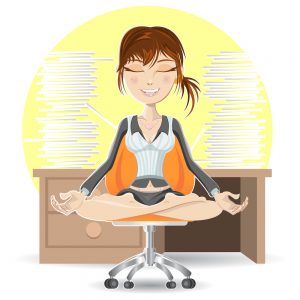 Written by Nadine.
Written by Nadine.
Stress is rife in the healthcare sector, yet it’s not a completely unconquerable problem in spite of the scale it has reached in recent years.
Those who feel it most acutely are frontline workers, dealing with the coalface of patient care day in, day out. With that in mind, here’s an analysis of what happens to the mental wellness of healthcare pros when they frequently face injuries brought on by extreme events like auto collisions, and how such concerns can be addressed.
The Impact of Repeated Trauma Exposure on Mental Health in Medical Settings
It’s no surprise that constantly facing the fallout of traumatic car accident cases affects healthcare workers. The psychological toll is significant. Compounded by the repercussions of the recent pandemic, it makes sense to see that a recent survey found 47% of workers in this field on the brink of quitting.
It boils down to the fact that emergency room doctors, nurses, and paramedics frequently deal with high-stress situations. Over time, these experiences can chip away at their mental well-being.
Healthcare professionals often exhibit symptoms associated with:
- Anxiety and depression
- Emotional exhaustion
- Burnout
Dealing with repeated trauma is emotionally draining, and it also rewires the brain. The more people encounter intense stress, the harder it becomes to switch off that “fight or flight” response.
Again, there’s hard data to support this. 60% of industry professionals are afflicted by burnout, while 13% have symptoms associated with post-traumatic stress disorder. They experience intrusive thoughts and hypervigilance, affecting their personal lives as well.
We can’t ignore this issue anymore, and the mental health of our frontline workers must be a priority as they continue saving lives under immense pressure every day.
Recognizing Early Signs of Stress Among Healthcare Workers
Healthcare professionals, especially those handling accident cases, often miss early stress indicators. Spotting these signs early can prevent severe mental health issues down the line.
Common symptoms include:
- Irritability and mood swings: Even small frustrations can cause big reactions.
- Sleep disturbances: Difficulty falling or staying asleep disrupts recovery.
- Physical complaints: Frequent headaches or stomach issues without a clear cause.
Stress impacts decision-making and patient care quality. Missed diagnoses and errors increase when healthcare workers operate under unrelenting pressure. This is an economic issue as much as anything else, with the costs that are created by medical errors estimated at anywhere between $20 and $45 billion a year.
Leading hospitals have programs in place to identify stress signals, with regular mental health check-ins being mandatory. They provide immediate support to staff showing initial signs of burnout or distress.
It’s also important to provide professional support in serious cases that goes beyond the realm of medical expertise. For instance, ensuring that patients and practitioners can speak with an auto accident injury attorney can provide peace of mind that compensation is available, making the long road to recovery less pitted with financial potholes to go with the emotional ones.
Effective Stress Management Techniques in High-Pressure Environments
Managing stress in the chaotic world of healthcare is essential. Healthcare professionals, especially those handling car accident cases, need robust strategies to stay grounded and effective.
Key techniques include:
- Regular Exercise: Physical activity releases endorphins, helping alleviate stress.
- Time Management: Prioritizing tasks prevents overwhelm and burnout.
- Mental Health Days: Taking occasional breaks can prevent long-term exhaustion.
Integrating these practices into daily routines doesn’t have to be complex. For example, brief meditation sessions can happen even in break rooms or quiet corners of hospitals. There are also a couple of other strategies to consider:
Team-Based Approaches
Collaboration is another critical element. Staff support each other by sharing workloads and offering emotional support after particularly tough cases. Some hospitals have buddy systems which pair staff members for mutual check-ins, which is a simple yet effective way to create connections and reduce isolation-induced stress.
Technology-Assisted Methods
Hospitals now use apps designed for mental health tracking, like Headspace or Calm, to offer guided meditations directly on workers’ phones, making self-care more accessible than ever before.
In short, employing diverse strategies like exercise routines, structured teamwork, and leveraging technology solutions lets healthcare professionals limit the knock-on effects of repeated trauma exposure. It’s not the whole story, as discussed, but it’s a good start.
Building Emotional Resilience
For those regularly facing traumatic accident cases, cultivating the trait of emotional resilience can mean the difference between thriving and burning out. It’s a proactive step, rather than a purely reactive one. So you’re taking control of the situations you face, rather than letting them steamroller you.
Core practices to build resilience include:
- Continuous Learning: Staying updated with medical advancements and refreshing essential skills enhances confidence in your own capabilities.
- Reflective Practice: Taking time to reflect on challenging cases helps process emotions.
- Strong Support Networks: Relying on colleagues and mentors provides a safety net during tough times.
There are also programs available in many regions which explicitly set out to shore up the emotional resilience of healthcare employees. These include:
Mindfulness-Based Stress Reduction (MBSR)
This program teaches mindfulness meditation techniques specifically geared towards reducing stress and increasing self-awareness, both of which are essential tools for emotional resilience. Many hospitals now offer MBSR courses as part of their employee wellness programs.
Resilience Training Programs
Institutions like Johns Hopkins and May Clinic have implemented formal resilience training, incorporating simulation exercises where staff practice managing crises in controlled environments before facing them in real life.
These programs focus on building key skills:
- Adaptive Coping Strategies: Teaching ways to handle stress effectively.
- Emotional Regulation Techniques: Helping maintain calm under pressure.
- Positive Thinking Frameworks: Encouraging optimistic outlooks even amidst challenges.
Embedding these best practices into everyday routines means healthcare professionals can strengthen their ability to cope with stressful situations without compromising either their mental health or patient care quality.
The Last Word
As we’ve shown, the psychological impact of handling car accident cases on healthcare professionals is profound. Early recognition and effective management of stress are a must in terms of maintaining their mental well-being.
Integrating best practices like emotional resilience training, mindfulness techniques, and leveraging technology means we can support these vital workers. Prioritizing their mental health ensures they continue to provide top-notch care while sustaining their own well-being in high-pressure environments.
Author bio: Nadine is a dedicated health coach and passionate writer, empowering clients to achieve phenomenal and sustainable results through a unique blend of nutrition, fitness, and fun. With a core belief in the importance of living a happy and balanced life, Nadine emphasizes that a successful lifestyle must be both sustainable and enjoyable. Her holistic approach and infectious enthusiasm inspire others to embrace a healthier, happier way of living.
Additional Resources
“Clinician of the Future” (2022). Elsevier Health. Access here.
Sulaiman Alamri, M. (Editor) et al (2023). “Emotional exhaustion and traumatic stress among healthcare workers during the COVID-19 pandemic: Longitudinal changes and protective factors”. PLoSOne. Access here.
Rodziewicz, TL et al. “Medical Error Reduction and Prevention”. StatPearls. Access here.
Please also review AIHCP’s Stress Management Certification program and see if it meets your academic and professional goals. These programs are online and independent study and open to qualified professionals seeking a four year certification





